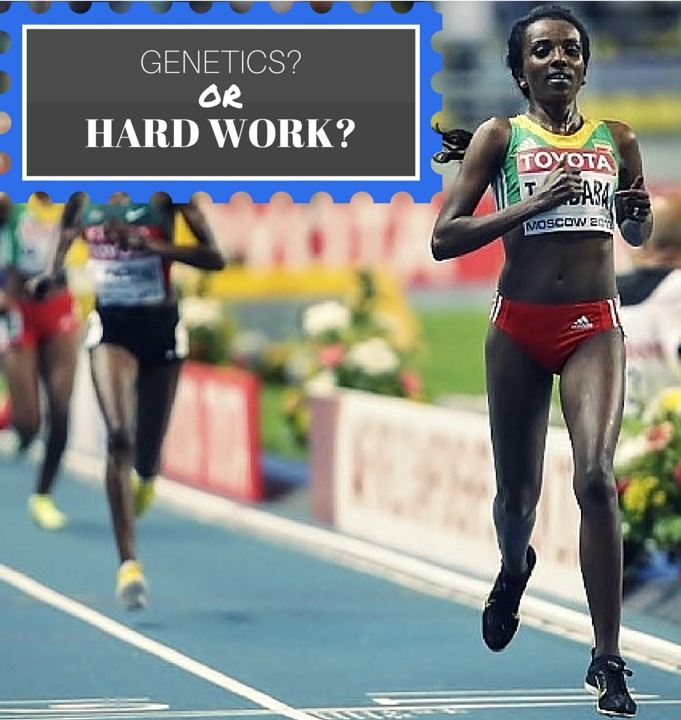At the moment, the best runners in the world are from Ethiopia. Moreover, we are easily swayed to think that Ethiopian runners are genetically gifted for running, but the justification for their exceptional endurance capacity is nonetheless shortsighted.
No Super Running Gene for The Best Runners
A study by Ash et al., examined the ACE gene in 76 endurance runners from Ethiopia, which included the top 3 finishers in the 2008 Olympics for the 5,000m, 10,000m, and marathon.
The researchers also examined the ACE gene in 317 subjects from the general population of Ethiopia.
The researchers compared the ACE gene of the general population of Ethiopia with the ACE gene of the elite Ethiopian runners and found no significant association between endurance athlete status and the ACE gene.
What Does the ACE Gene Do?
The ACE gene codes for a protein that regulates blood pressure whereby a variation of the gene codes for higher muscle efficiency and greater running economy.
At first glance, experts believed that Ethiopian endurance runners had an ACE gene variant because of their superior running economy compared to non-African runners.
However, emerging studies show that the ACE gene is not a determinant of world-class endurance runners from Ethiopia. Now, we can no longer use genetics to rationalize their field-crushing performance more easily.
Why Are Ethiopian Runners Tough to Beat?
My guess is that Ethiopian runners win because they begin training at an early age, ran barefoot until adolescence, and most likely train harder -focusing more on just running and less on drills and technology such as underwater treadmills.
Ultimately, running barefoot for so long gave these runners an early advantage to adopt stronger legs and feet and better biomechanics, which included a safer landing pattern.
- Running barefoot over many years enabled Ethiopian runners earlier adaptations to efficient biomechanics, including a proper foot strike that is less forceful
- As a result, running-related injuries are less of a problem compared to heel strike-shod running populations
One cannot forget that running is heavily ingrained into the Ethiopian culture, sort of like how hockey is to Canadians.
In all, hard training that begins very early in life coupled with running barefoot undoubtedly contributes to greater leg strength and better biomechanics which has some barring on running economy.
More From Run Forefoot:
Why Forefoot Running is Better – Learn why forefoot running is helpful to performance and injury prevention.
Heel Strike vs Forefoot Strike – An engineer’s perspective on the differences between forefoot running and heel strike running.
Why You Keep Getting Injured– Here I list all the injuries that are linked to heel strike running.
Shoe Reviews – My reviews on the best barefoot running shoes for forefoot running.
Most Popular Minimalist Shoes for Forefoot Running:
Women’s Vibram FiveFingers KMD Sport LS
References:
Ash et al. (2011). No association between ACE gene variation and endurance athlete status in Ethiopians. Med Sci Sport Exer,43(4):590-7.
Bretta Riches
BSc Neurobiology; MSc Biomechanics candidate, ultra minimalist runner & founder of RunForefoot. I was a heel striker, always injured. I was inspired by the great Tirunesh Dibaba to try forefoot running. Now, I'm injury free. This is why I launched Run Forefoot, to advocate the health & performance benefits of forefoot running and to raise awareness on the dangers of heel striking, because the world needs to know.
Latest posts by Bretta Riches (see all)
- Can You Run In Barefoot Shoes? Yes, But DON’T Heel Strike! - 21/07/2024
- Why Cushioned Running Shoes Are Really Bad for Your Feet - 19/07/2024
- Do Cushioned Running Shoes Cause Injuries? - 17/07/2024


Leave a Reply